| Recent Featured Videos and Articles | Eastern “Orthodoxy” Refuted | How To Avoid Sin | The Antichrist Identified! | What Fake Christians Get Wrong About Ephesians | Why So Many Can't Believe | “Magicians” Prove A Spiritual World Exists | Amazing Evidence For God | News Links |
| Vatican II “Catholic” Church Exposed | Steps To Convert | Outside The Church There Is No Salvation | E-Exchanges | The Holy Rosary | Padre Pio | Traditional Catholic Issues And Groups | Help Save Souls: Donate |  |
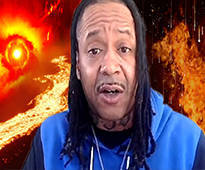
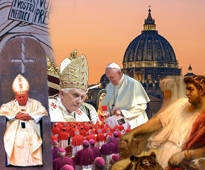
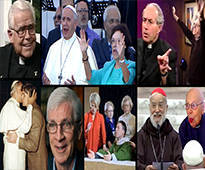
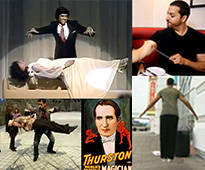


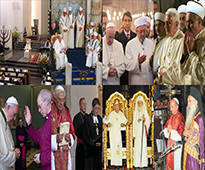


 " />
" />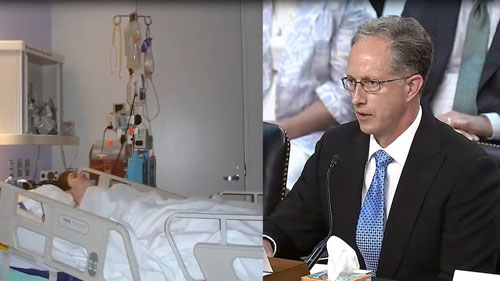 " />
" /> " />
" /> " />
" /> " />
" />




Is Feeneyism Catholic?, by Fr. Francois Laisney (SSPX)
Back to the summary on SSPX
Published in 2001, Fr. Laisney’s book was a masterpiece in deceit. There are startling and shockingly dishonest things in his book, which will be exposed in the “Lies” section.
HERESY:
LIES:
Fr. Laisney’s argument here is that the Council of Trent used the same term that St. Thomas did (ex ipso voto) when defining on the necessity of baptism. Thus, according to him, it embraced St. Thomas’s teaching on baptism of desire. The problem for Fr. Laisney, however, is that nowhere does the Council of Trent use the term “ex ipso voto” in regard to baptism or justification (and, to my knowledge, nowhere at all)! The term used in Sess. 6, Chap. 4 (the passage Laisney wrongly believes favors his view) is not ex ipso voto, but “aut eius voto.” Also, the term used in Sess. 7, Can. 4 (which Laisney also wrongly believes favors his view) is not ex ipso voto either, but “aut eorum voto.” Does the fact that he attributes a term to Trent, which is not to be found in Trent, matter to him at all? Apparently not.
As they are used in their respective contexts, the terms that Trent did employ do not favor baptism of desire, as shown in the sections on Trent’s teaching in this document. But this is another example of how Fr. Laisney feels that he can just add terms to Trent according to his own whim. He remains oblivious to the fact that it is a mortal sin to knowingly attribute things to infallible documents which most certainly aren’t there. Laisney’s knowledge of Latin and familiarity with the topic are such that there is no excuse for him on the basis of an innocent mistake.
In the last lie that we exposed, Fr. Laisney was claiming that the term used by Trent was ex ipso voto. Here he decides to say that Trent used the expression “re aut voto (“in deed or in desire”) in Sess. 6, Chap. 4 and Sess. 7, Can. 4. Which one is it, Father Laisney?
Is it “re aut voto” or “ex ipso voto”? I guess the answer is: whatever is more convenient for Fr. Laisney. The problem for Fr. Laisney – and this seems to be a consistent problem – is that Trent also does not use the term “re aut voto” in either of these passages! Fr. Laisney has again added to an infallible document and deliberately misrepresented its teaching.
First of all, it’s ironic that Fr. Laisney uses the term “inseparably linked,” because it was Pope St. Leo the Great who defined that the sanctification of a sinner is inseparably linked to water baptism!
So while Fr. Laisney raves about how inseparably linked baptism of desire and baptism of blood are to the dogma Outside the Church There is No Salvation, he actually uses the same language that the pronouncement of Pope St. Leo did, but with precisely the opposite meaning. He asserts that the idea that the Spirit of Sanctification can be separated from the water of baptism is “inseparably linked” to Catholic dogma; whereas Pope St. Leo defines dogmatically that the Spirit of Sanctification is inseparably linked to water baptism.
Besides this, what else can be said about the assertion, “The doctrine of baptism of blood and baptism of desire is inseparably linked by the Church to the dogma outside the Church there is no salvation”? The only thing that I can think of is, “Oh really?” Is that why in no fewer than seven ex cathedra pronouncements on “the dogma outside the Church there is no salvation,” the “doctrine of baptism of desire/blood” is not mentioned even once? Is that why in all the councils in the history of the Church not one mention is made of either term? Yes, the “doctrines” of baptism of desire and baptism of blood are so inseparably linked to the dogma Outside the Catholic Church There is No Salvation that none of the many popes who defined this dogma bothered to mention them. Fr. Laisney's statement is just another lie.
In other words, according to Fr. Laisney, not a single saint or pope in the history of the Church denied the existence of baptism of desire! This is the same lie that Fr. Rulleau asserted in his book. So my question is: Do these men have consciences? Fr. Laisney knows that St. Gregory Nazianz specifically denied the concept of baptism of desire (See “Baptism of Desire and Baptism of Blood: Erroneous Traditions of Man”), which makes his statement another lie. And we know for a fact that Fr. Laisney knows this, because the passage from St. Gregory is quoted on pages 64-65 of his book!
CONTRADICTIONS:
Father Laisney justifies his belief in baptism of desire exclusively on the teaching of saints. It is on this same authority that he attempts to justify binding others to baptism of desire.
Hence, if Fr. Laisney were logical, he must teach that Catholics are bound to believe that baptisms performed by heretics are invalid, since St. Cyprian teaches this in the same document in which he teaches baptism of blood. But no, Fr. Laisney does not teach this and therefore contradicts his own line of reasoning. In fact, Cyprian’s rejection of the validity of baptisms performed by heretics is not the only error that he makes in the aforementioned document. He also teaches that baptism of blood is a sacrament,[8] a position that is denied universally by all modern baptism of desire apologists, including Laisney himself.[9]
But being the remarkable hypocrite that he is, Fr. Laisney does not dogmatize St. Bernard’s erroneous statement above, but only those passages from St. Bernard which he likes: the few on baptism of desire. And Laisney cuts out of the quotation the part where St. Bernard admitted that he may have been wrong (see section on St. Bernard in this document for the full discussion). Likewise, when the incredibly dishonest Fr. Laisney quotes St. Alphonsus, he does not include St. Alphonsus’s erroneous reference to Sess. 14, Chap. 4 because he knows that St. Alphonsus was dead wrong on this point.[11] Further, when he quotes St. Robert Bellarmine on the Church, Laisney does not include where St. Robert Bellarmine says that catechumens are not part of the Church![12]
As I’ve said, in studying the quotations from saints and theologians which Laisney brings forward as “proof texts” for baptism of desire, I have found that in almost every single instance, the same saint or theologian makes another significant error in the same document. For example:
Here Cornelius a Lapide makes a major error. He says that the Council of Trent “expressly” explains John 3:5 in Sess. 7, Can. 4 to favor the idea of baptism of desire. But Sess. 7, Can. 4 does not mention John 3:5 at all. John 3:5 is not even mentioned in the entire decree on the Sacraments in General, so it most certainly does not explain John 3:5 “expressly” to favor baptism of desire.
But this instance is very useful for this discussion for this reason: If Lapide makes a major blunder about Trent’s teaching on John 3:5 (in fact, Lapide’s statement wasn’t even in the ballpark), then obviously he is vulnerable to other errors. To quote such passages from theologians as if they “confirm”[14] the so-called baptism of desire, as Laisney does, is ridiculous. Lapide wasn’t even in the ballpark on what he was trying to convey; yet, according to the Society of St. Pius X, we are supposed to assent to his every sentence as an expression of infallible dogma.
I believe that there is a reason why God allowed these saints and theologians to err repeatedly and on various matters when explaining baptism of desire: to let people know that they are not infallible. Fr. Laisney and the SSPX most certainly do not get this message. They continue on in their diabolical campaign to denounce those who understand John 3:5 “as it is written” (Trent, Sess. 6, Chap. 4) and that the Sacrament of Baptism is necessary for salvation (Trent, Sess. 7, Can. 5 on the Sacrament of Baptism).
AMAZING CONTRADICTIONS:
Besides the contradictions already exposed, there are others that must be considered in the SSPX book Is Feeneyism Catholic? The fact that a self-proclaimed “traditional Catholic priest,” Fr. Laisney, can lie about the Council of Florence the way that he does, makes it not that surprising when we find him contradicting himself all over the place.
This statement is quite true, founded on solemnly defined dogma (See the section “Infants Cannot Be Saved Without Baptism”). But look at this:
Need I say more to prove that Fr. Laisney is a liar and an astounding hypocrite, who contradicts himself blatantly within just a few pages? Page 22 of his book says that there is “no other possibility” for infants’ salvation than through water baptism. Page 77 teaches quite clearly that “baptism of blood” applies to infants. So much for his statement on page 22! But it gets worse when we consider what Laisney had to say about the definition from the Council of Florence which declares that no infant can possibly be justified without the Sacrament of Baptism.
A number of things are significant about Fr. Laisney’s treatment of this dogmatic definition. First is the fact that Fr. Laisney makes it a special point to note that Florence only mentioned children in this passage. He concludes that while there is no other remedy for children other than the Sacrament of Baptism, there is another remedy for original sin for adults (baptism of desire). He tries to bolster this position by pointing out that the above passage from Florence is a quotation from St. Thomas Aquinas, who (in the document quoted) goes on to teach that there is another remedy for adults. The problem for Fr. Laisney is that the Council of Florence did not incorporate St. Thomas’s paragraph on there being another remedy for adults (Summa Theologica, Pt. III, Q. 68, A. 3), but stopped the quotation from him after stating that there is no other remedy for infants.
This fact should make Fr. Laisney think. Why did the Holy Ghost only allow Pope Eugene IV and the Council of Florence to incorporate the passage from St. Thomas on infants, and not his teaching in the very next paragraph on baptism of desire? Why didn’t God allow the Council to simply continue with the quotation only one more short paragraph, which would have made it clear once and for all that baptism of desire is a teaching of the Church? It’s obvious that the Holy Ghost wanted St. Thomas’s teaching on the Sacrament of Baptism being the only remedy for infants in the Council, and that He did not want St. Thomas’s teaching that baptism of desire is another remedy for adults in the Council. This is why the one paragraph appears and the other does not.
But what actually appears in the Council of Florence and what doesn’t is not a concern to Fr. Laisney, because when he finds that something is not in a Council which he wants to be there, he just adds it himself. In this case, Laisney decides to create his own definition by adding the paragraph of St. Thomas which Florence very specifically did not incorporate. I quote him again:
Sorry Fr. Laisney, but the Council of Florence did not mention baptism of desire, and it did not permit a delay for catechumens for the reasons given by St. Thomas. And it most certainly did not teach that baptism of desire is “another remedy” for adult catechumens. These thoughts of St. Thomas were not incorporated into the Council; but because you want them to be there so badly, you just couldn’t refrain from adding them in. Hence, you do not honestly report the teaching of the Church on the subject of Baptism, as you claim, but you lie about the content of the highest Magisterial pronouncements, because you are uncontrollably biased and obsessed in your quest to prove that people can be saved without baptism. What Florence did define, in fact, denies any possibility of salvation without water baptism.
So, let’s reconsider Fr. Laisney’s astounding contradictions on whether an infant can be saved without the Sacrament of Baptism. If Fr. Laisney made it a special point to lie that Florence taught that there is another remedy for adults, based (albeit illogically) on the fact that Florence did teach that there is no other remedy for infants, then at least one would expect that Fr. Laisney is going to be consistent with the fact that there is no other remedy for infants than the Sacrament of Baptism, right? In other words, there is no way in the world that Fr. Laisney, if he is honest, could teach that there is another remedy for infants other than the Sacrament of Baptism. After all, this fact (that infants have no other remedy other than the Sacrament) is the basis upon which his lie (that there is another remedy for adults) is founded. But no! Fr. Laisney doesn’t even believe that infants have no other remedy, but rather holds that infants can be saved without the Sacrament of Baptism, according to page 77 of his book.
This proves that Fr. Laisney’s emphasis (on pages 47-48 of his book) that Florence defined that for children there is “no other remedy” other than the Sacrament of Baptism was made for one calculated reason. It was made in the hope of being able to prove that there is another remedy for adults – baptism of desire. His emphasis on this point was solely because he thought it would favor baptism of desire. His whole discussion about how Catholics must be faithful to the definition of Florence was a sham and a deception. Listen to this hypocrite explain how no one can deny the passage of Florence on there being no other remedy for infants other than baptism, which he himself denies in his book!
And ironically, while Laisney claims his false position as the teaching of Tradition, it is Tradition which shows that water baptism is the only help (i.e., the only remedy) to salvation for everyone, even adults who desire it.
One could go on exposing the books of the Society of St. Pius X, but what has been shown thus far should suffice to establish that they do not uphold Church teaching, to put it nicely. No one can give a penny of financial support to this heretical Society or the St. Benedict Center or any other priest or group who does not uphold the Church’s teaching on the absolute necessity of baptism and the absolute necessity of the Catholic Faith for salvation, which unfortunately includes almost every priest today. One who would obstinately support such a priest, after becoming aware of his heretical position, would partake in his heresy and place himself on the road to Hell.
Furthermore, in light of Pope St. Leo the Great’s dogmatic pronouncement against the concepts of baptism of desire and baptism of blood, the teaching of the Council of Florence on John 3:5, and the teaching of the Council of Trent that the Sacrament of Baptism is necessary for salvation (Sess. 7, Can. 5), no one could even support a priest who believes in the theory of explicit baptism of desire (even if that priest may be in good faith until the Church’s teaching is pointed out to him). The first duty of any Catholic is to uphold the faith. One cannot compromise any point of the faith by supporting a priest who does not hold the faith whole and undefiled.
Unfortunately, the Society of St. Pius X is not alone among heretical “traditionalists”. It is a fact that almost every priest in the world today, including almost every “traditional” priest, denies the necessity of baptism for salvation, and holds that people who die as non-Catholics can attain salvation. This lack of faith is explained by the fact that we are living in the last days of the world, the times of the Great Apostasy predicted in Sacred Scripture.
Endnotes:
[1] Fr. Francois Laisney, Is Feeneyism Catholic, p. 47.
[2] Fr. Francois Laisney, Is Feeneyism Catholic, p. 48.
[3] Fr. Francois Laisney, Is Feeneyism Catholic, p. 52.
[4] Fr. Francois Laisney, Is Feeneyism Catholic, p. 38.
[5] Fr. Francois Laisney, Is Feeneyism Catholic, p. 49.
[6] Fr. Francois Laisney, Is Feeneyism Catholic, pp. 85-86.
[7] Decrees of the Ecumenical Councils, Vol. 1, p. 81.
[8] Fr. Francois Laisney, Is Feeneyism Catholic, p. 59.
[9] Fr. Francois Laisney, Is Feeneyism Catholic, p. 9.
[10] Fr. Francois Laisney, Is Feeneyism Catholic, p. 68.
[11] Fr. Francois Laisney, Is Feeneyism Catholic, p. 77.
[12] Fr. Francois Laisney, Is Feeneyism Catholic, p. 76.
[13] Fr. Francois Laisney, Is Feeneyism Catholic, p. 34.
[14] Fr. Francois Laisney, Is Feeneyism Catholic, p. 34.
[15] Fr. Francois Laisney, Is Feeneyism Catholic, p. 22.
[16] Fr. Francois Laisney, Is Feeneyism Catholic, p. 77.
[17] Fr. Francois Laisney, Is Feeneyism Catholic, p. 47.
[18] Fr. Francois Laisney, Is Feeneyism Catholic, p. 47.
[19] Fr. Francois Laisney, Is Feeneyism Catholic, p. 48.
[20] Denzinger 696; Decrees of the Ecumenical Councils, Vol. 1, p. 542.
[21] Fr. Francois Laisney, Is Feeneyism Catholic, pp. 48-49.
[22] Fr. Jacques Dupuis, S.J. and Fr. Josef Neuner, S.J., The Christian Faith, p. 540.
Sign up for our free e-mail list to see future vaticancatholic.com videos and articles.
Recent Content
^